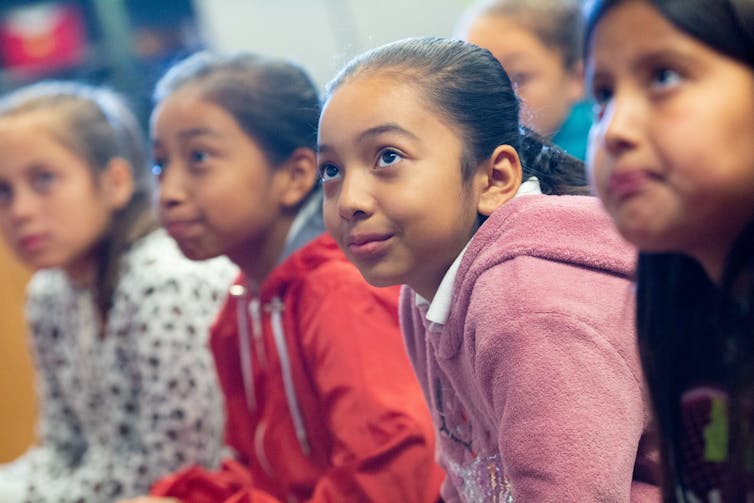
During the COVID-19 pandemic, we heard about people experiencing different kinds of fatigue, whether related to burnout, being unmotivated to follow pandemic restrictions or as a symptom of infection. But what exactly is fatigue?
Fatigue is not synonymous with tiredness. When one is tired, sleep helps. Fatigue results when cognitive, emotional or physical attentiveness is required for prolonged periods of time resulting in feelings of tiredness, exhaustion or lack of energy or desire to continue a task. It is not resolved by a nap.
Fatigue regularly includes difficulties in concentration, feelings of anxiety and increased distractibility. Medical professionals and researchers currently define fatigue by differentiating types of exertion: physical, cognitive and as it has more recently been conceptualized, social-emotional.
I am working with colleagues to provide a means for students with disabilities and their educational teams to understand the impact of fatigue, to advocate for appropriate strategies and programs and to moderate fatigue in educational contexts.

Fatigue in school-aged children
Fatigue among school-aged children can have many negative effects. One study based in Japan found about 16 per cent of elementary and 34 per cent of junior high school students reported experiencing fatigue throughout a typical school week. In this study, self-reported fatigue was associated with difficulties with motor processes and executive functions, inevitably leading to poorer academic performance.
The same researchers also found that decreasing cognitive functioning was also related to a decrease in intrinsic motivation and consequently, poor academic performance.
In addition, fatigue has been associated with a variety of psychoeducational issues, such as reduced physical activity, slower educational progress, more frequent school absences, less socializing with friends and family and increased stress in children.
Students with disabilities

In educational settings, fatigue is frequently experienced by people with disabilities.
Research has documented how young students who are deaf or hard of hearing experience fatigue daily related to the need for constant and ongoing physical, social-emotional or mental effort for:
Listening and watching both their teacher and classroom support personnel such as a sign language interpreter or educational assistant;
Communicating with peers through a communication device or lip/speech reading;
Attending to classroom instruction through an amplification device.
The cumulative effects of such experiences lead to poorer quality of life outcomes for these students, including limiting educational and vocational choices, increased mental health concerns and negative impacts on family and friend relationships.
Poorly understood impact
Currently, the impact of fatigue in educational settings for students with disabilities is poorly understood by teachers, administrators, policymakers and parents or caregivers and students themselves.
Educators frequently fail to understand the importance of providing educational supports to mitigate fatigue, or mislabel symptoms of fatigue with terms like laziness, stubbornness or a behavioural problem.
Students often fail to recognize fatigue symptoms, lack understanding of how their learning is compromised by fatigue and have limited coping strategies. As a result, they frequently cannot or do not openly name or express their fatigue.
There have been some efforts made within educational systems to address acknowledging and responding to fatigue to support student engagement and wellness (such as options for flexible scheduling or periodic breaks). Yet, our research team found when we interviewed junior high and high school students who are deaf or hard of hearing that none of the students we interviewed were consistently afforded such accommodations.
Instead, students were left to cope with increased levels of fatigue on their own.

Next research steps
As a next step towards better understanding the impact of fatigue for students with disabilities, my colleagues and I designed the Fatigue in Educational Contexts (FEC) survey.
The purpose of the survey is to accurately identify, describe and interpret the presence and intensity of fatigue and to inform how students’ fatigue can be alleviated in educational contexts. Our current focus is on students who are deaf or hard of hearing, but we plan to expand our focus to all students once the survey is refined.
Most available fatigue surveys examine workplace or injury related fatigue in adult populations. A commonly used standardized survey designed for children and adolescents, the PedsQL-MFS, has significant limitations for our purposes:
- It was not developed for individuals with disabilities nor is it inclusive of the heterogeneity of the disabled student population;
- None of the items on the survey specifically address fatigue in classrooms.
Including wider student, family responses
The child version of the recently published Vanderbilt Fatigue Scale includes some survey questions addressing fatigue in classroom environments. However, it focuses exclusively on fatigue as a result of auditory effort (for deaf or hard of hearing individuals using amplification devices and spoken language) and is accessible only in written text format.
Currently, there is no survey suitable for a diversity of students with disabilities, including among deaf students who are sign language users and/or who are dual language users, meaning they both sign and use spoken language, but not simultaneously.
The FEC survey will be innovative because it will be designed to capture experiences of these students, and it will include the perspectives of students, their families and educational teams about how they understand and see student fatigue.
This research can help educators and policymakers propose relevant changes in education, such as policy or curricular changes, educator training or resource allocation or protocols for relating with students, families or communities to better respond to and mitigate students’ fatigue.
Natalia Rohatyn-Martin does not work for, consult, own shares in or receive funding from any company or organization that would benefit from this article, and has disclosed no relevant affiliations beyond their academic appointment.
This article was originally published on The Conversation. Read the original article.







